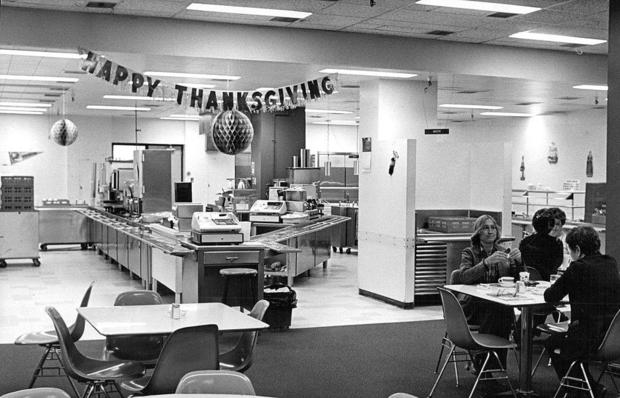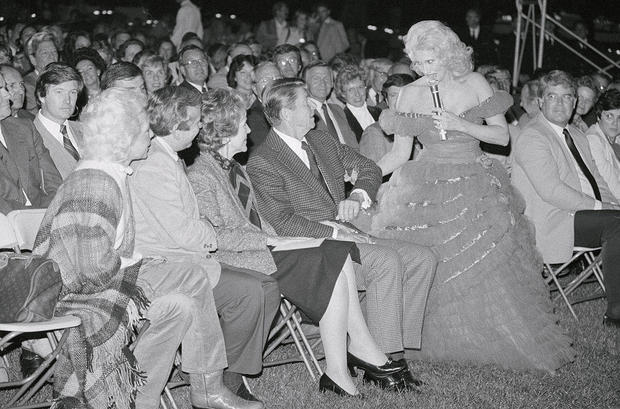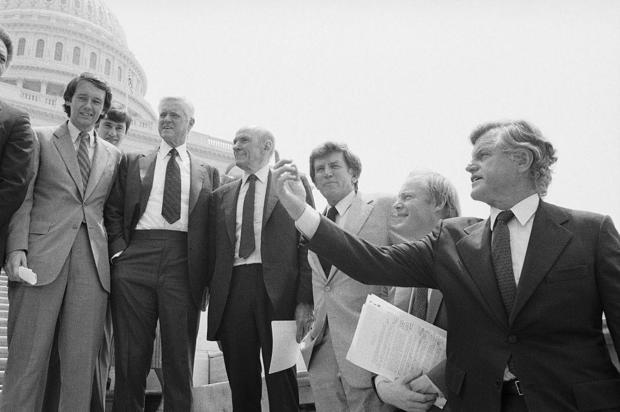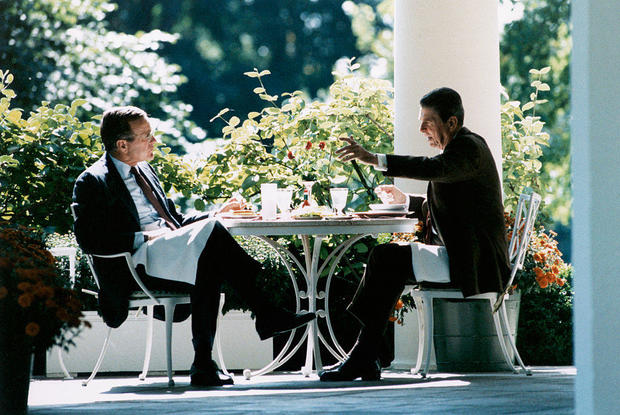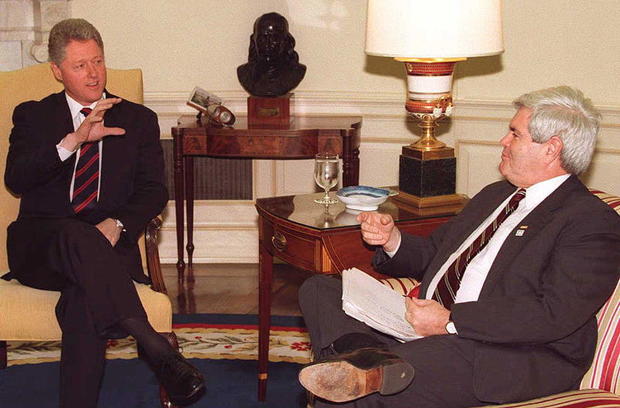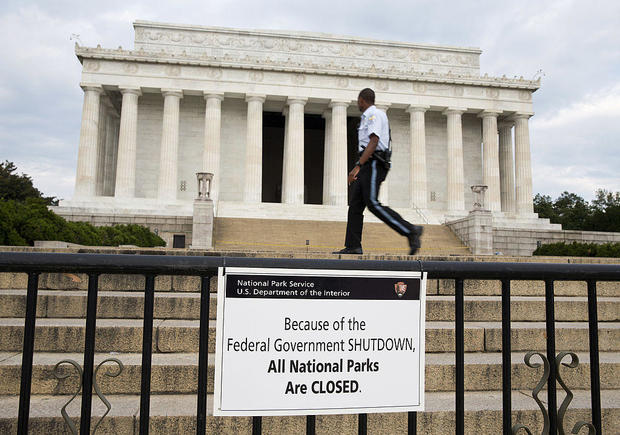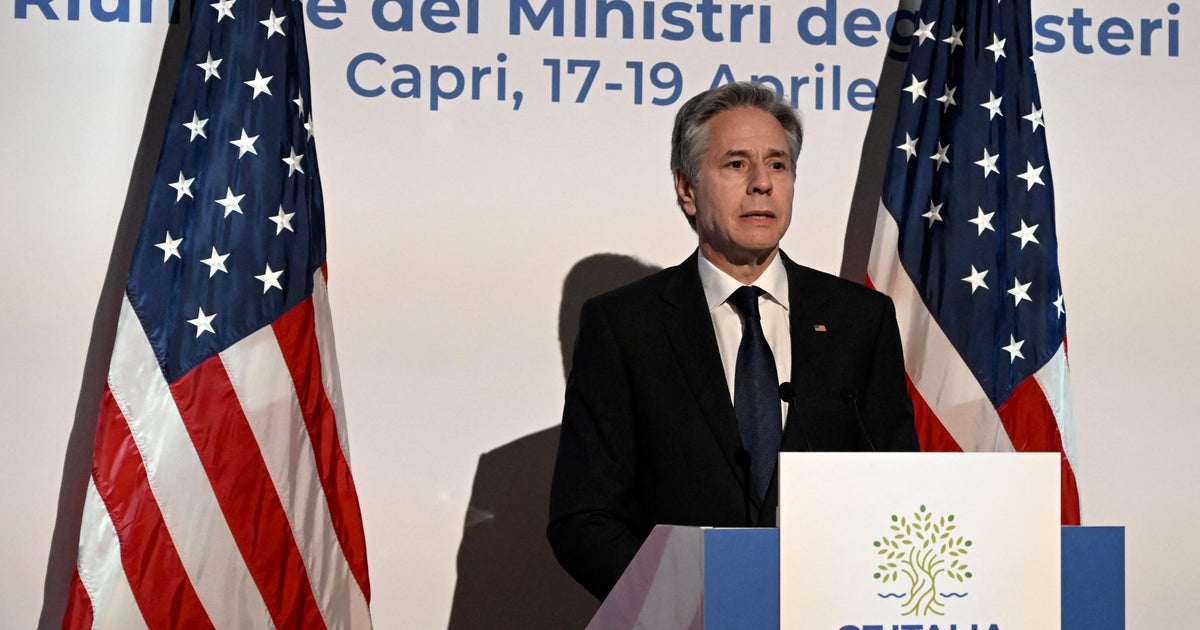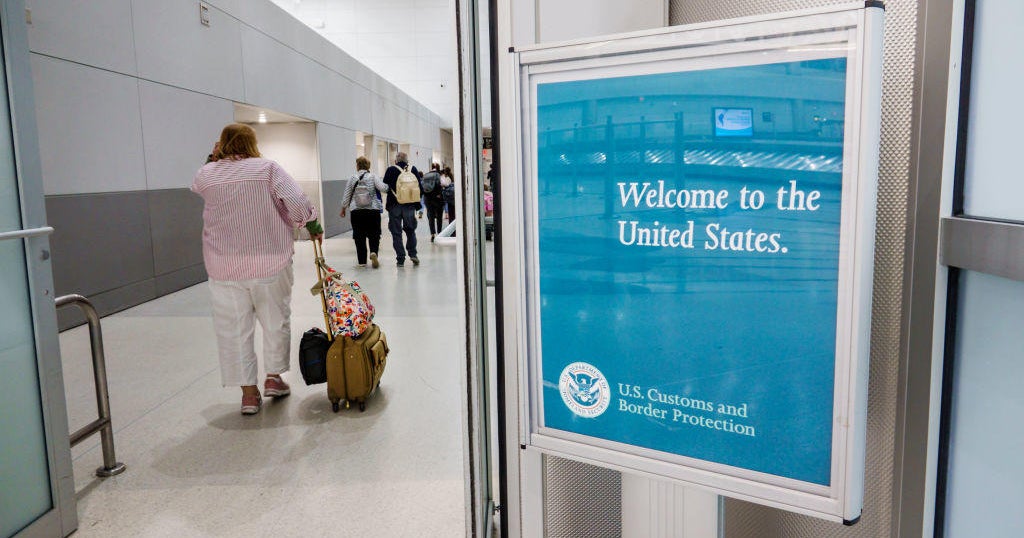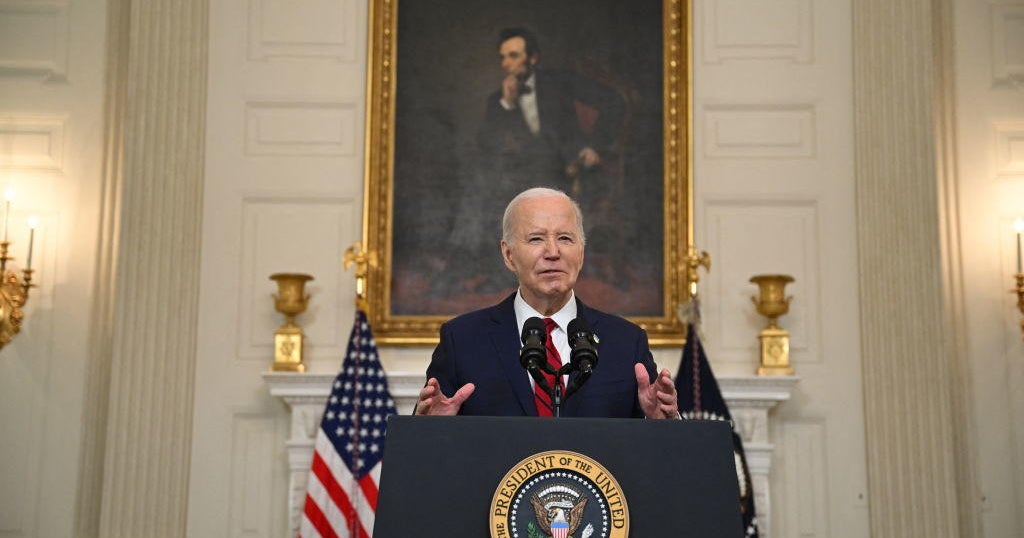A history of government shutdowns: The 14 times funding has lapsed since 1980
Washington — Congress appears to be barreling toward another government shutdown, with Republicans in the House struggling to coalesce around a plan to fund federal agencies beyond a fast-approaching Oct. 1 deadline.
House Speaker Kevin McCarthy is insisting that billions of dollars to tighten border security be included in any stopgap measure to keep the government operating past Saturday night. The House voted on Tuesday to advance four full-year appropriations bills, which are unlikely to go anywhere in the Senate.
In the upper chamber, Majority Leader Chuck Schumer is taking his own steps to advance a short-term funding measure, which attracted strong bipartisan support in a test vote on Tuesday. McCarthy said Wednesday that there is little support in the House GOP conference for the Senate's bill, and he plans to move forward with his own version of a short-term extension later this week.
A government shutdown occurs when Congress fails to approve funding for federal agencies. Before 1980, agencies largely continued operating during a lapse in funding with the assumption that Congress would act quickly. But in 1980 and 1981, then-Attorney General Benjamin Civiletti authored a series of legal opinions that found government agencies didn't have the authority to continue running during a gap in funding.
President Ronald Reagan oversaw eight shutdowns during his time in office, the longest of which lasted three days. There were three funding gaps between 1990 and 1995, then none until 2013.
The threat of a government shutdown has become more frequent over the past decade, as Congress has found itself engaged in funding fights that are ultimately resolved with massive, year-long spending packages. The most recent lapse in government funding, in late 2018, caused $3 billion in permanent losses, according to the Congressional Budget Office. Hundreds of thousands of federal workers are expected to feel the impacts of a shutdown if a deal isn't reached this time around.
Here is a look at the lapses in government funding that have taken place over the past four decades:
Nov. 20, 1981
Duration: Two full days
White House: President Ronald Reagan
Senate control: Republicans
House control: Democrats
What happened: On Nov. 20, 1981, the Senate approved legislation that fell short of spending cuts Reagan had sought. The bill differed from a version passed in the House and funding technically lapsed at midnight, but since Nov. 21 fell on a Saturday, the effects weren't felt immediately. House and Senate negotiators worked over the weekend to reconcile their differences and passed identical bills on Sunday.
On Monday, Reagan vetoed the plan and ordered the government to shut down, placing 250,000 federal employees on furlough. Later in the day, lawmakers passed a stopgap bill to keep the government funded and allow more time for talks on a deal. Workers returned the next day.
Sept. 30, 1982
Duration: One day
White House: Reagan
Senate control: Republicans
House control: Democrats
What happened: The one-day shutdown was not the result of a bitter stalemate, but happened because members of Congress were busy with social commitments.
The New York Times reported at the time that "congressional leaders barred a late-night session because of major social events tonight by both Republicans and Democrats." Reagan had invited members of Congress to a barbecue at the White House, while Democrats had a $1,000-per-plate fundraising dinner.
The president eventually signed spending bills approved by Congress.
Dec. 17, 1982
Duration: Three days
White House: Reagan
Senate control: Republicans
House control: Democrats
What happened: The shutdown arose in part from Reagan's opposition to a measure that included billions in funding for a jobs creation program and Democrats' opposition to money for the MX missile program.
Congress walked away from the jobs provision but included money for legal support for low-income Americans. Lawmakers also declined to fund the missile program, but Reagan still signed the legislation to end the shutdown.
Nov. 10, 1983
Duration: Three days
White House: Reagan
Senate control: Republicans
House control: Democrats
What happened: The shutdown stemmed from Democrats adding roughly $1 billion in education spending, and cutting foreign aid. House Democrats ended up decreasing their request for education spending to $100 million and provided money for the MX missile, which Reagan wanted. Democrats kept their cuts to foreign aid and defense.
Sept. 30, 1984
Duration: Two days
White House: Reagan
Senate control: Republicans
House control: Democrats
What happened: Reagan and congressional Democrats were at odds over several provisions included in a funding bill that cleared the House, namely a crime bill favored by the president, and a water projects measure he opposed. Democrats also wanted legislation reversing a Supreme Court decision that found entire colleges that did not accept federal or state funding were not subject to Title IX's requirements even though their students did receive federal assistance.
Lawmakers approved and Reagan signed a bill that kept the government open for several more days to allow negotiations to continue.
Oct. 3, 1984
Duration: One day
White House: Reagan
Senate control: Republicans
House control: Democrats
What happened: The stopgap funding measure passed days earlier didn't do enough to stave off another shutdown. Democrats ultimately gave in and removed the water projects and civil rights provisions, and Congress passed the crime bill.
Oct. 16, 1986
Duration: One day
White House: Reagan
Senate control: Republicans
House control: Democrats
What happened: Congressional Democrats wanted welfare expansion, then known as Aid to Families with Dependent Children, as well as other measures the White House opposed. Democrats ultimately walked away from several of their favored provisions and were promised a vote on welfare expansion in order to end the funding stalemate.
Dec. 18, 1987
Duration: One day
White House: Reagan
Senate control: Democrats
House control: Democrats
What happened: The lapse in government funding was the result of disagreement over providing aid to the Contras in Nicaragua and Democrats' push to reinstate the Fairness Doctrine, a policy from the Federal Communications Commission that required broadcast licensees to cover different sides of controversial issues. The rule was repealed in 1987.
In the end, Congress approved nonlethal aid for the Nicaraguan rebels, but Democrats were unsuccessful in their efforts to reinstate the Fairness Doctrine.
Oct. 5, 1990
Duration: Three days
White House: President George H.W. Bush
Senate control: Democrats
House control: Democrats
What happened: Bush said he would veto a short-term funding measure that did not include a plan to reduce the deficit, forcing a shutdown. Congress ultimately passed a joint budget resolution that outlined a plan for reducing the deficit, and the president signed a continuing resolution that reopened the government.
Nov. 13, 1995
Duration: Five days
White House: President Bill Clinton
Senate control: Republicans
House control: Republicans
What happened: The shutdowns that occurred during Clinton's presidency centered around his dispute with congressional Republicans of their pledge to balance the budget and repeal the president's 1993 tax increases. The GOP, led by Speaker Newt Gingrich, took control of the House for the first time in 40 years in 1995 in what would be remembered as the "Republican Revolution."
The GOP-led Congress passed a short-term continuing resolution that sought to boost Medicare premiums and required the president to balance the budget within seven years, among other measures. But Clinton vetoed the legislation, which led to a shutdown.
Clinton and Republican congressional leaders ultimately reached a deal to fund the government for several weeks and allow negotiations to continue.
Dec. 15, 1995
Duration: 21 days
White House: Clinton
Senate control: Republicans
House control: Republicans
What happened: The additional time given to Congress and the White House in November to continue talks wasn't enough, and funding lapsed again in mid-December. Unlike the November 1985 shutdown, this one lasted much longer, into early January 1996.
The issue was which agency's budget projections, the Congressional Budget Office or the Office of Management and Budget, the White House should use to show that the budget was balanced within seven years. In the end, Republicans backed down: then-Senate Majority Leader Bob Dole indicated in a floor speech on New Year's Eve that "we ought to end this. I mean, it's gotten to the point where it's a little ridiculous, as far as this senator is concerned."
Sept. 30, 2013
Duration: 16 days
White House: President Barack Obama
Senate control: Democrats
House control: Republicans
What happened: The fight began over the Affordable Care Act and a push by Republicans to dismantle key parts of Obama's signature health care law. The GOP-led House passed two spending bills, one of which would've delayed implementation of Obamacare, which were both rejected by the Democratic-led Senate.
Obama called for a spending bill with no conditions attached, but Republicans ultimately opted to shut down the government over their opposition to the landmark health care law.
House Republicans led by Speaker John Boehner in the end ceded to Democrats and approved a short-term spending bill that didn't include changes to Obamacare.
Jan. 19, 2018
Duration: Two days
White House: President Donald Trump
Senate control: Republicans
House control: Republicans
What happened: The shutdown, which officially began on the one-year anniversary of Trump's inauguration, stemmed from a fight over immigration, and specifically Democrats' demands for protections for "Dreamers," undocumented immigrants who were brought to the U.S. as children.
The White House, however, said it would not engage in negotiations over the Deferred Action for Childhood Arrivals program, which extended legal protections for Dreamers, while the government was shut down.
In the end, Democrats relented after Republicans pledged to work toward a deal addressing DACA, and Trump signed a short-term funding bill that reopened the government.
Dec. 21, 2018
Duration: 34 days
White House: Trump
Senate control: Republicans
House control: Republicans/Democrats
What happened: Months later, immigration was again at the center of the government funding fight, though this shutdown involved Trump's demand for $5.7 billion to pay for a wall along the U.S.-Mexico border.
As the shutdown stretched to become the longest in history and Democrats took control of the House, the former president ended up signing a bill to reopen agencies for three weeks and did not include money for the border wall. Weeks later, Congress averted another shutdown by passing a measure that included $1.375 billion for the border wall, far less than the $5.7 billion Trump requested.
